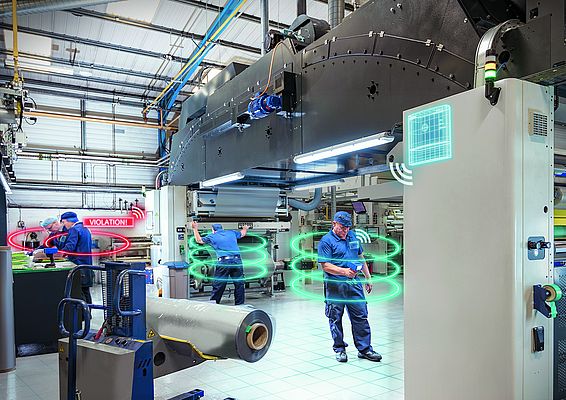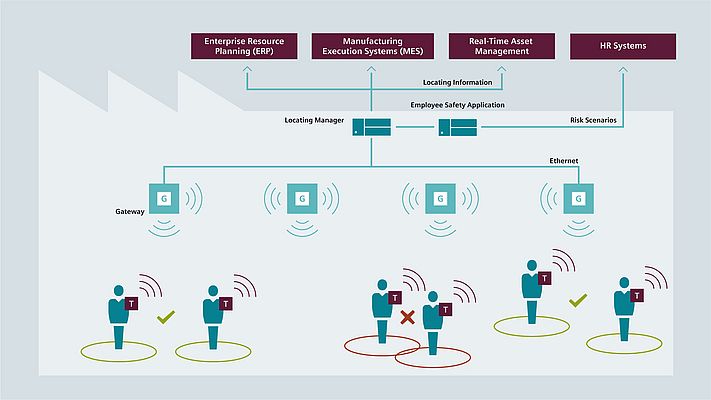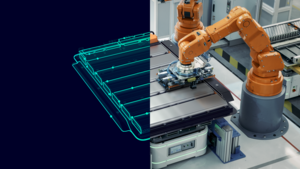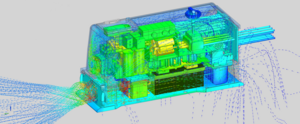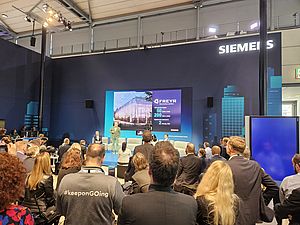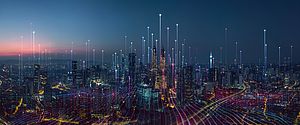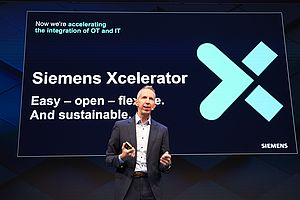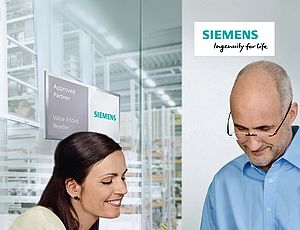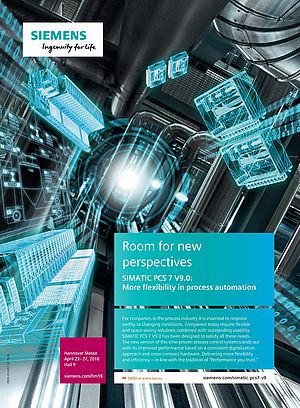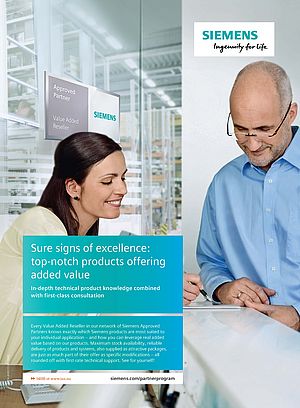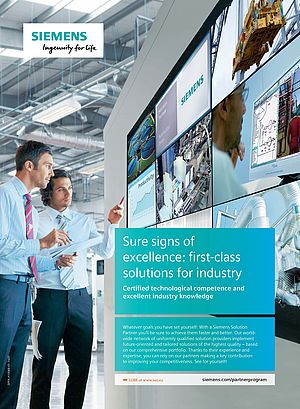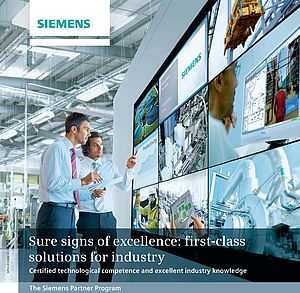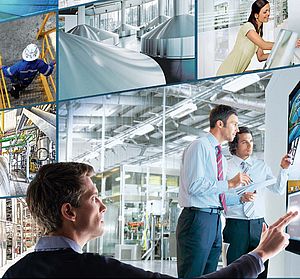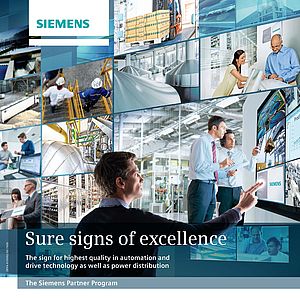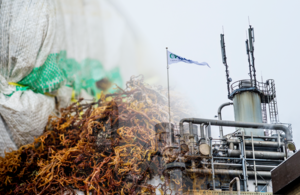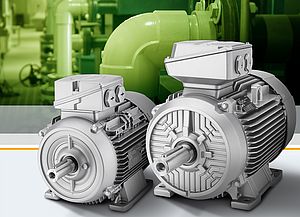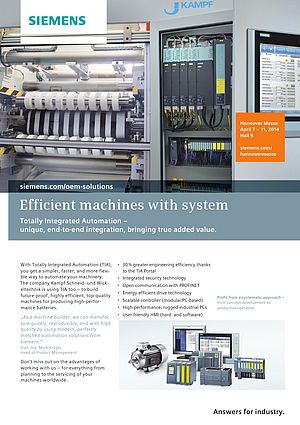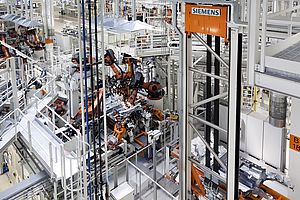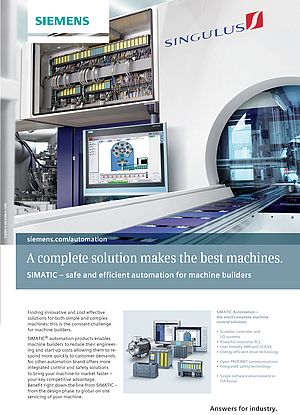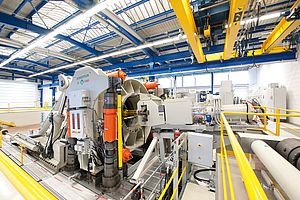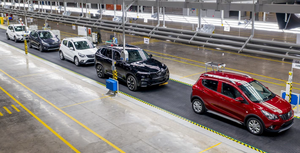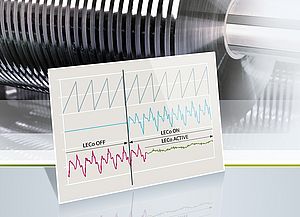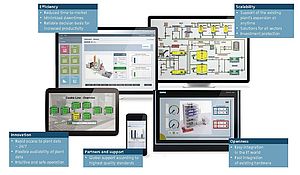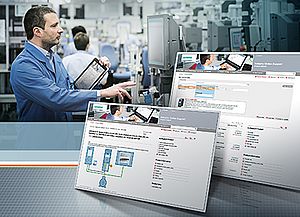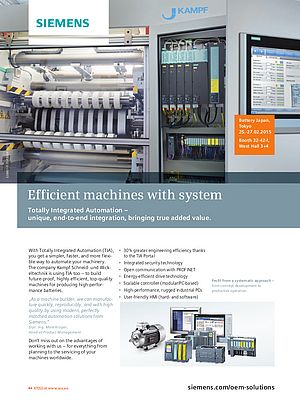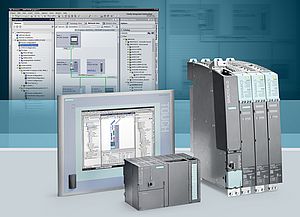During the corona pandemic many companies are faced with the question of how to keep their production running without putting the safety of employees at risk. One solution: the social distancing solution from Siemens based on the Real-Time Locating System (RTLS), which is explained here in an interview with Nicole Lauther, Siemens USA, who is coordinating the global roll-out of the solution.
IEN Europe: Nicole, social distancing is considered a key measure for containing COVID-19, at least in Germany. What does this mean for companies?
N. Lauther: In principle, we at Siemens are in the same situation as our customers. Either there was a complete shutdown, so that only a minimum of emergency personnel was allowed into the plants, or a plant was considered to be essential and had to continue operating. But since many countries have at least started easing their restrictions, everyone must find a way of resuming work or returning to the usual work-load – but in a safe working environment. And in this respect, according to virologists, keeping your distance is still the best measure if you don't want to wear a protective mask for an entire shift.
IEN Europe: Now, maintaining a minimum distance is not a particularly complicated rule. Why do customers ask for technical support?
N. Lauther: This is a combination of several things. On the one hand, you may simply forget the distance rule in your everyday work and stand close to other people in production, for example, in order to solve a problem on a machine. Secondly, some encounters cannot be avoided, for example in narrow aisles – this is where those in a position of responsibility need transparency to identify such points. Perhaps a company can then reposition machines, introduce one-way systems for the walkways, and so on. And finally, there is the issue of tracking in the event of an infection: with whom did an infected employee come into contact? In which areas of the plant were the potentially infected employees working that is which parts need to be disinfected? So, one is a warning function in everyday life, while the other concerns management in the case of a corona outbreak.
IEN Europe: How does the Siemens solution for social distancing work?
N. Lauther: Our solution is based on Simatic RTLS, a real-time radio locating system. Actually, it is used to optimize production processes, for example by continuously locating materials, products, and production equipment. For this purpose, a certain area is equipped with RTLS gateways, which can then locate the transponders in fractions of a second.
For social distancing, every employee now receives an RTLS tag (transponder), which has a large display and is worn visibly on the clothing like a name tag. This tag transmits the location data to a software program (SieTrace), which uses an algorithm to determine whether employees are standing too close together. This information is also shown to the employees on the display. If users do not keep their distance, the tag flashes and displays a warning. The design can be changed according to customer requirements. In addition, the positional data is stored in a database.
IEN Europe: What does it need this database for?
N. Lauther: There are two issues at stake. Firstly, is an adequate distance being maintained? Are there any parts of the plant where potentially dangerous encounters occur repeatedly? And for what length of time do the employees stand close to one another? SieTrace can display a heat map for this purpose, so that those responsible can see when and where risky situations occur and take the appropriate organizational actions to eliminate these risks.
Secondly: in the event of an infection, who was too close to which employee and for how long? Based on this information, it is possible to work out who needs to be tested for the coronavirus or even sent into quarantine – but not the entire workforce. And the software also indicates which parts of the plant need to be disinfected - but again, not the entire site. In this way, the data helps to manage a coronavirus outbreak.
IEN Europe: Coronavirus apps for smartphones are now available in many countries - for example in Germany. So why do you need an RTLS solution?
N. Lauther: There are several reasons for this. For one, reception is poor in some plants, so the smartphone apps are inaccurate or do not work properly at all. In addition, some plants prohibit the use of a smartphone, for example due to plant safety or security regulations. A third problem is the perception of an alarm. Our RTLS transponders are worn in a clearly visible way, so that not only the employees themselves, but also their co-workers in the surrounding area can hear the alarm. And then some apps (like those in Germany) are designed in such a way that the data is not collected in a database. This is fine for personal use on the street or in the supermarket - but within companies, it leads to a considerable risk and limits the options for reacting to an infection.
IEN Europe: Indoors, the apps have a considerable disadvantage: they do not recognize any structural partitions. If there is a wall between us, we can safely work at a distance of less than 2 meters - but the app might still trigger an alarm. How is it with RTLS?
N. Lauther: Locating systems such as Simatic RTLS often use "metadata", in other words, information about the structural surroundings. This enables us to clearly identify partitions and the like and to filter the alarm messages accordingly. So, problem solved!
IEN Europe: Perhaps this is a typical German question, but what do the data protection authorities have to say about your recording of data on employees' movements?
N. Lauther: This is not just a German problem, but employees in other countries are actually also worried about what happens to their data. Are people checking how long their breaks are, or which colleagues are chatting to each other? For this reason, we do not record any personal data with SIMATIC RTLS, but only a unique number (tag ID). The assignment to the individual employee, if desired, is done by the company, and in this respect an organizational regulation can be superimposed in the company. It may be specified, for example, that this assignment only be made in justified cases with cooperation between management and the works council. Each company has its own system and must also take different national regulations into account. The database is also encrypted, and access is protected. And when the system is introduced, certain areas such as changing rooms or toilets can be excluded altogether.
Ultimately, those responsible in the companies must get together and decide how to balance the safety requirements on the one hand and the personal rights of the employees on the other. And then it must be clear: dispensing with technical aids completely does not solve the problem!
IEN Europe: Now, if I, as a customer, am enthusiastic about your solution because it helps me to get my production running again, how quickly can I install Social Distancing and Simatic RTLS?
N. Lauther: The important thing here is that we are talking about existing technologies. The system can be operated in standalone mode, so that no major effort is necessary for integration. In this respect, the system can be introduced at very short notice – currently we already have several test installations in the USA.
IEN Europe: Can I also integrate the app in my control center software?
N. Lauther: Yes, of course; we offer this as a service to our customers.
IEN Europe: And what about my investment if a vaccine or medicine becomes available?
N. Lauther: The great advantage of an RTLS-based solution is that the tracking can be used like an infrastructure for a variety of applications. And RTLS also offers great advantages for the actual production management, which are reflected in a swift return-on-investment (RoI). Installing Simatic RTLS thus kills two birds with one stone: customers can introduce a solution to the coronavirus problem at very short notice while at the same time investing in the future viability of their operations to develop strong competitive advantages in both the medium and long term.



